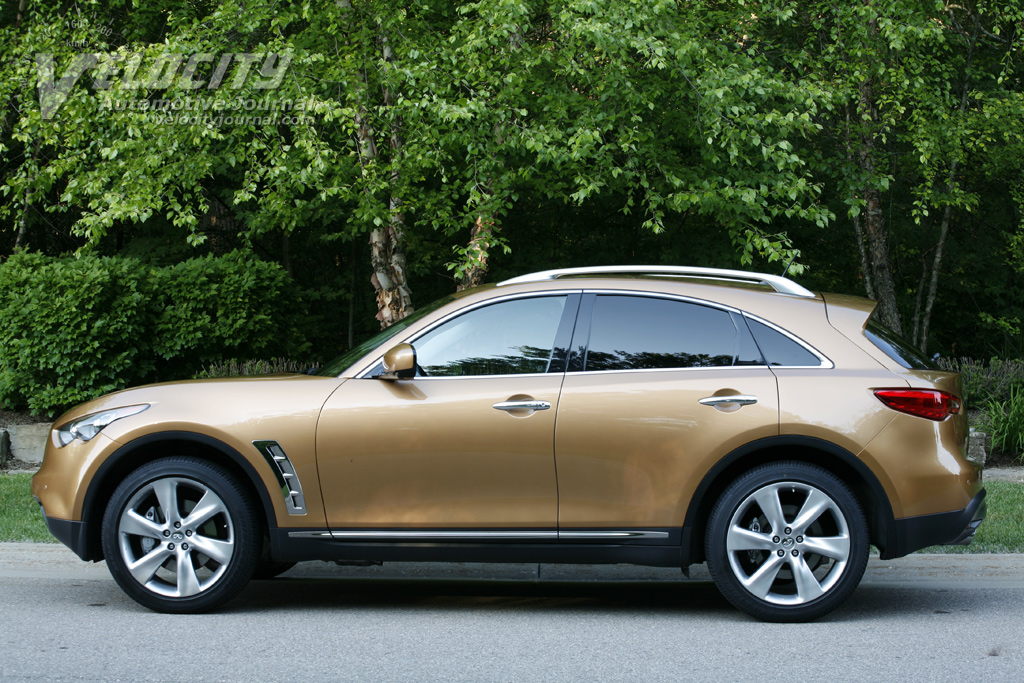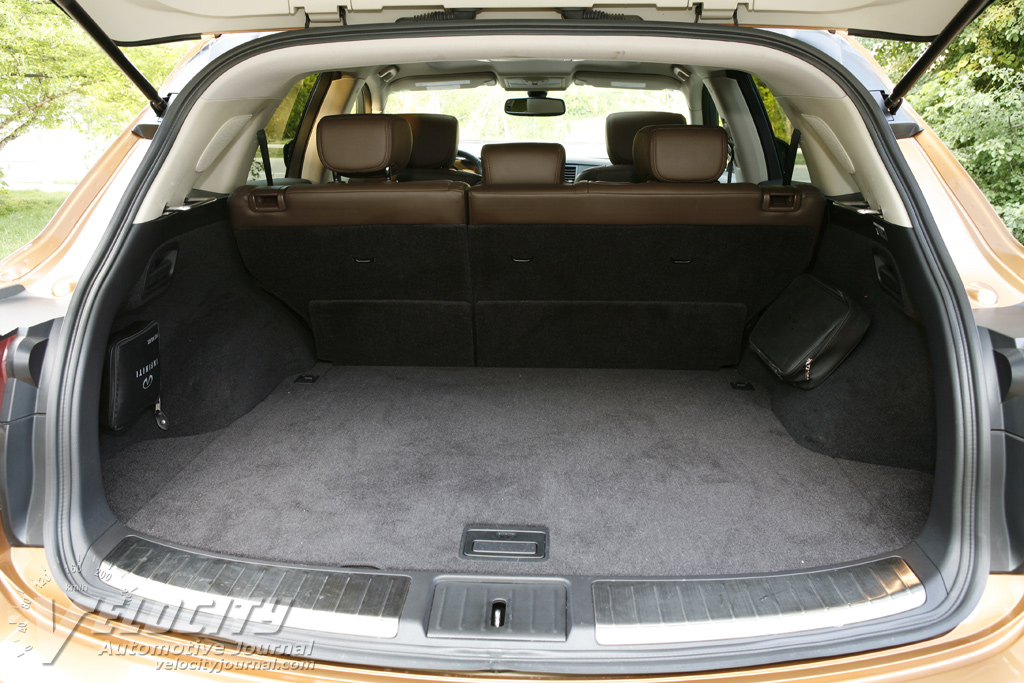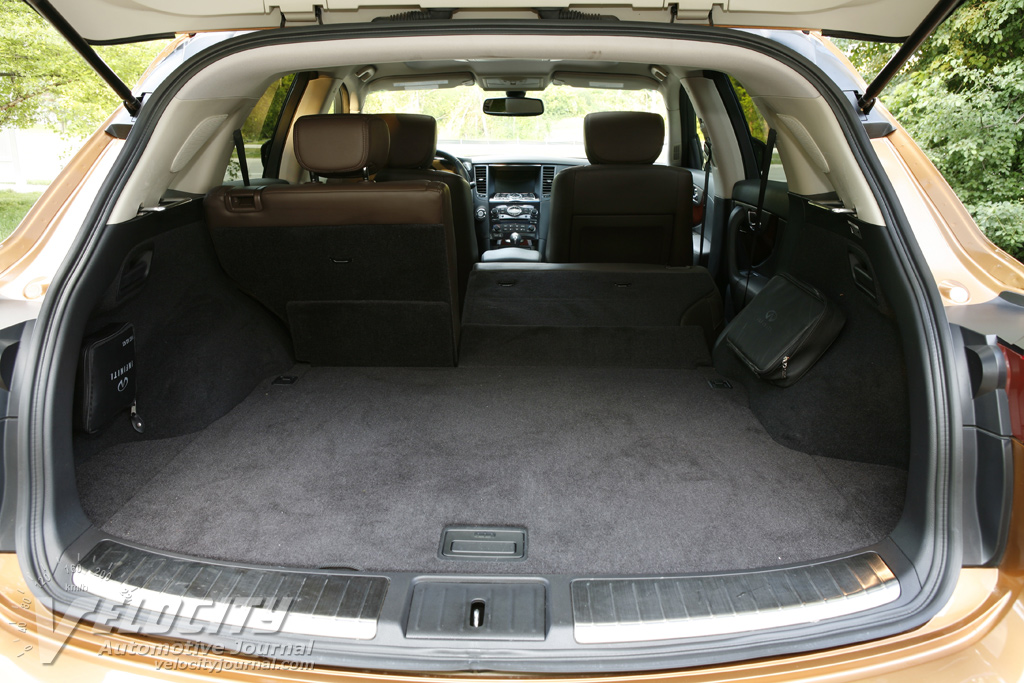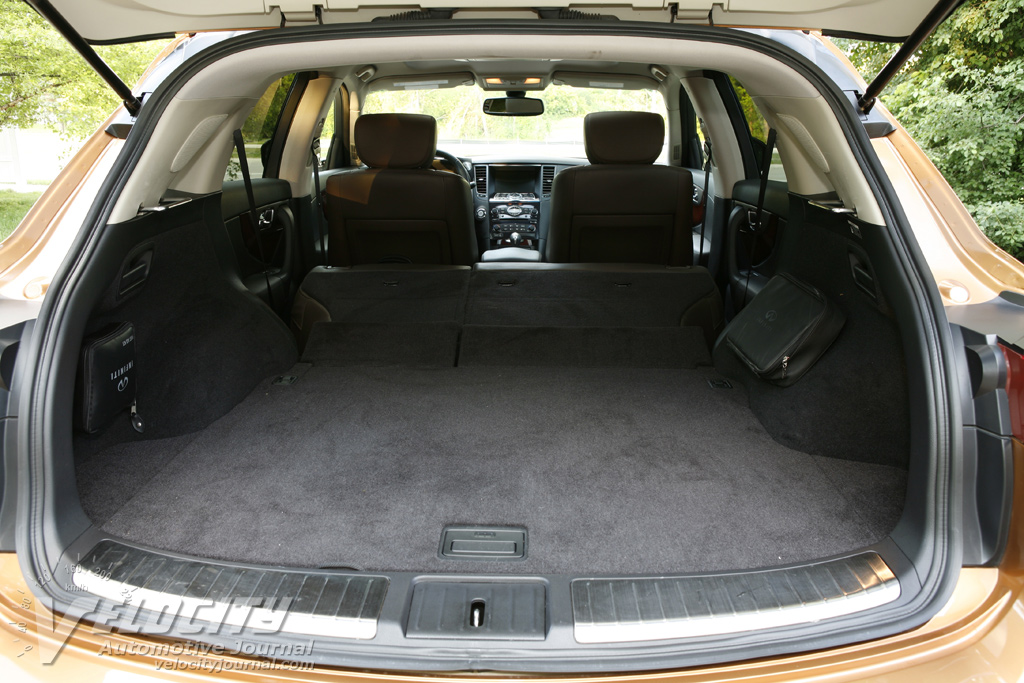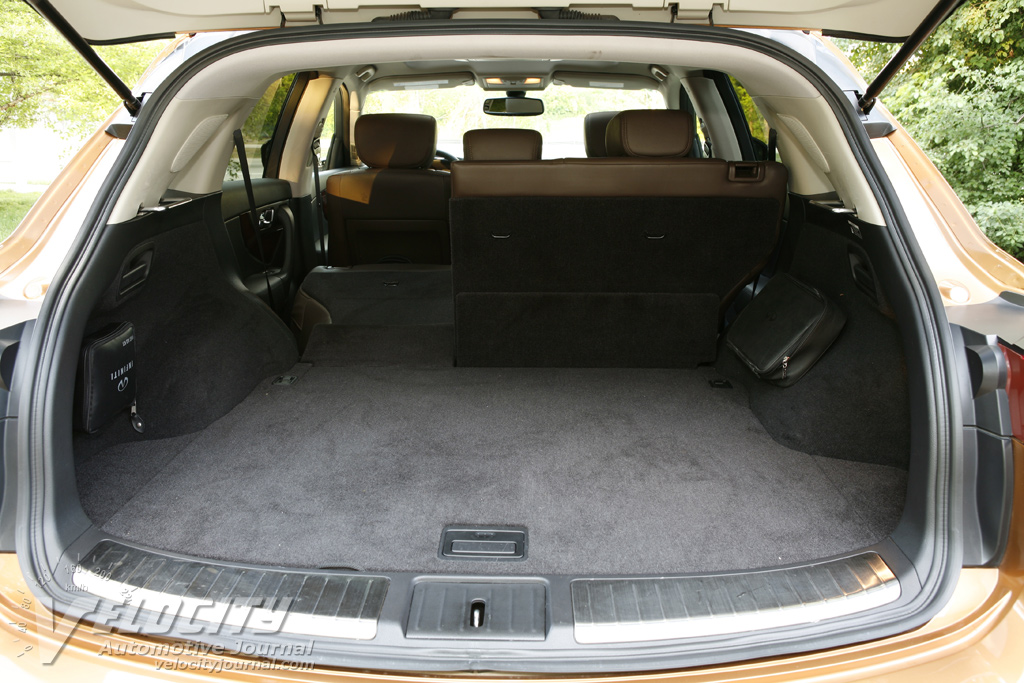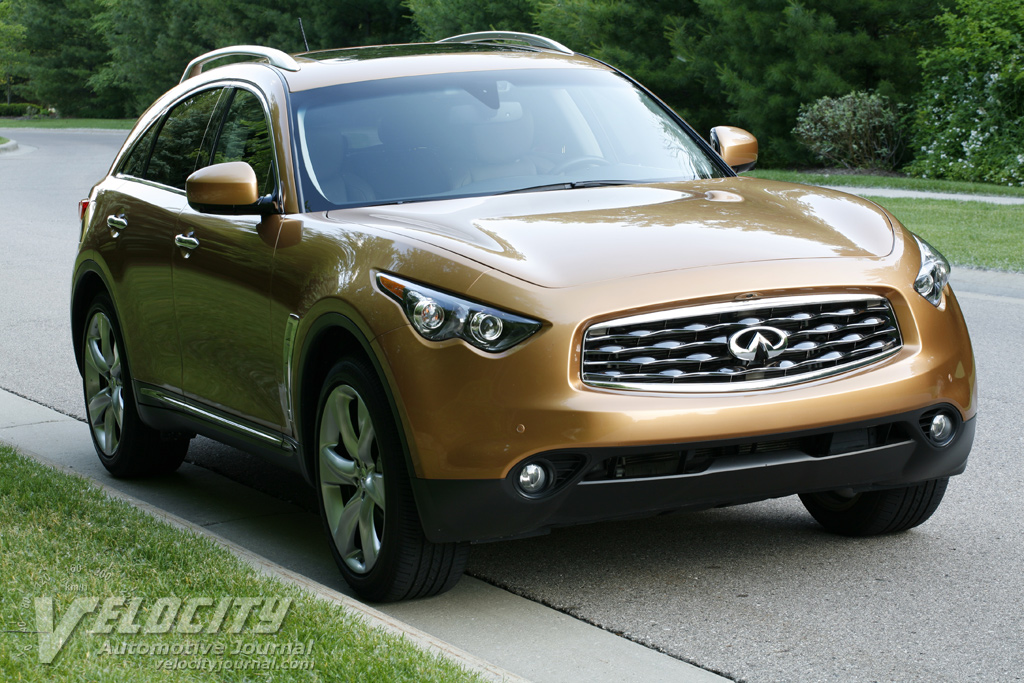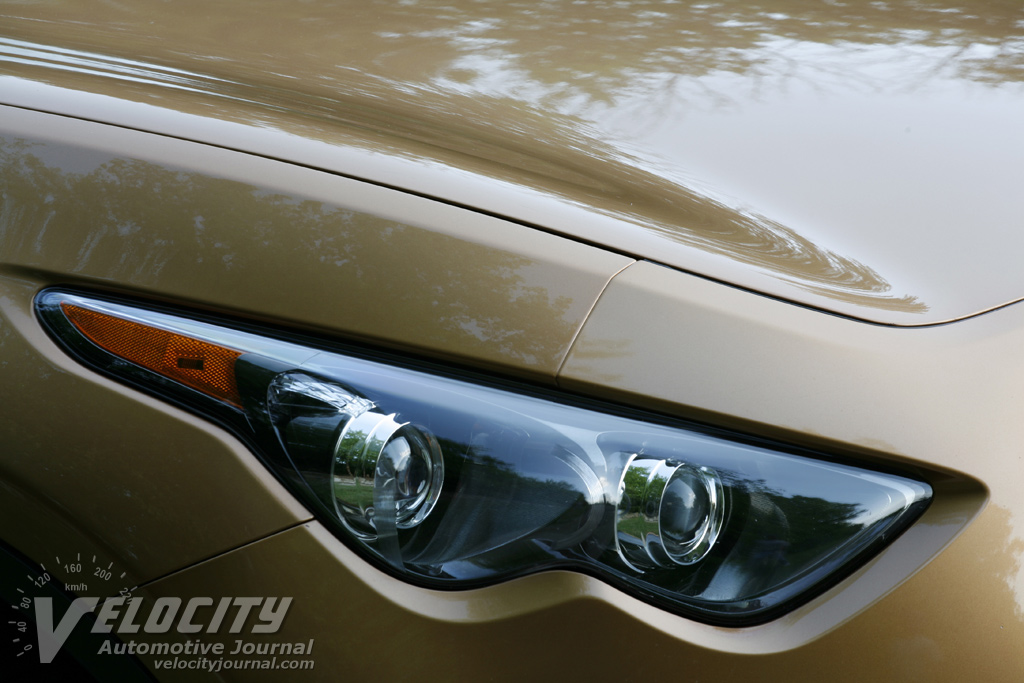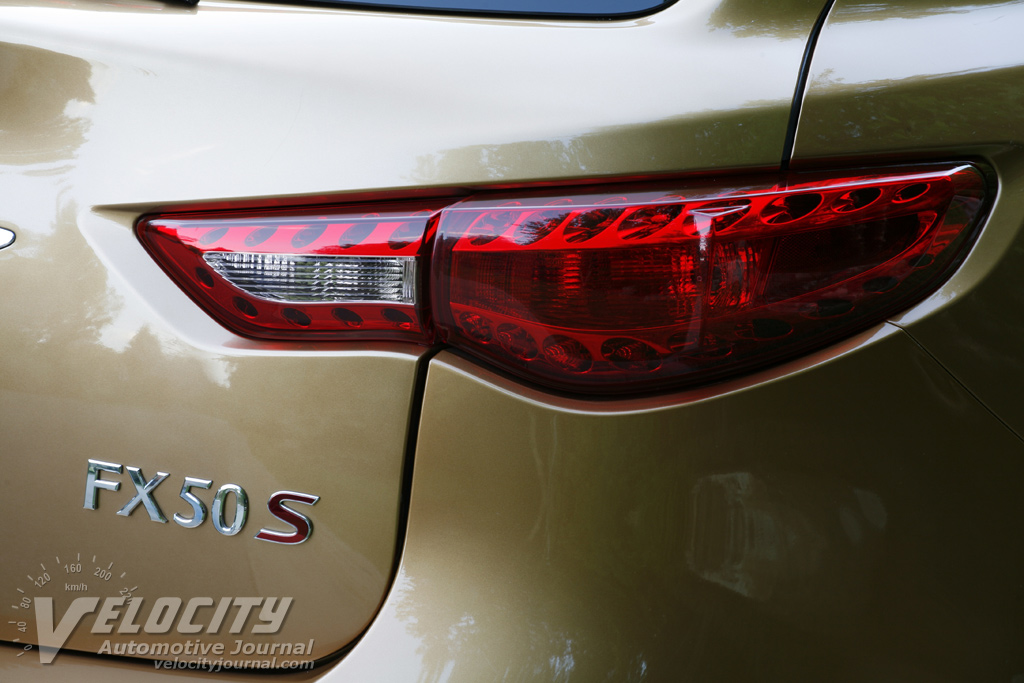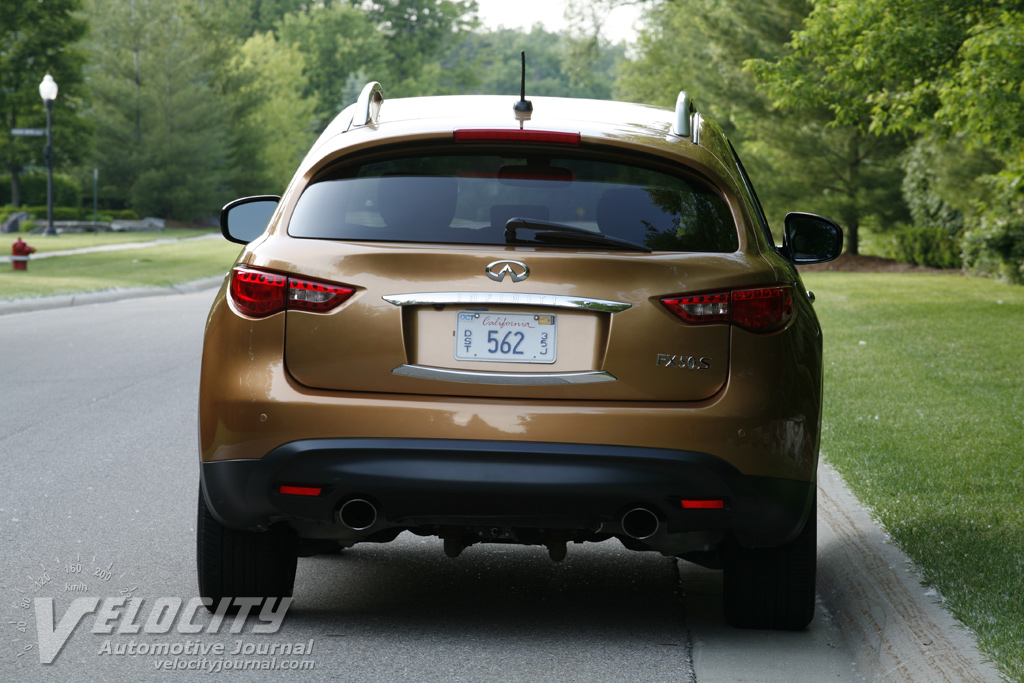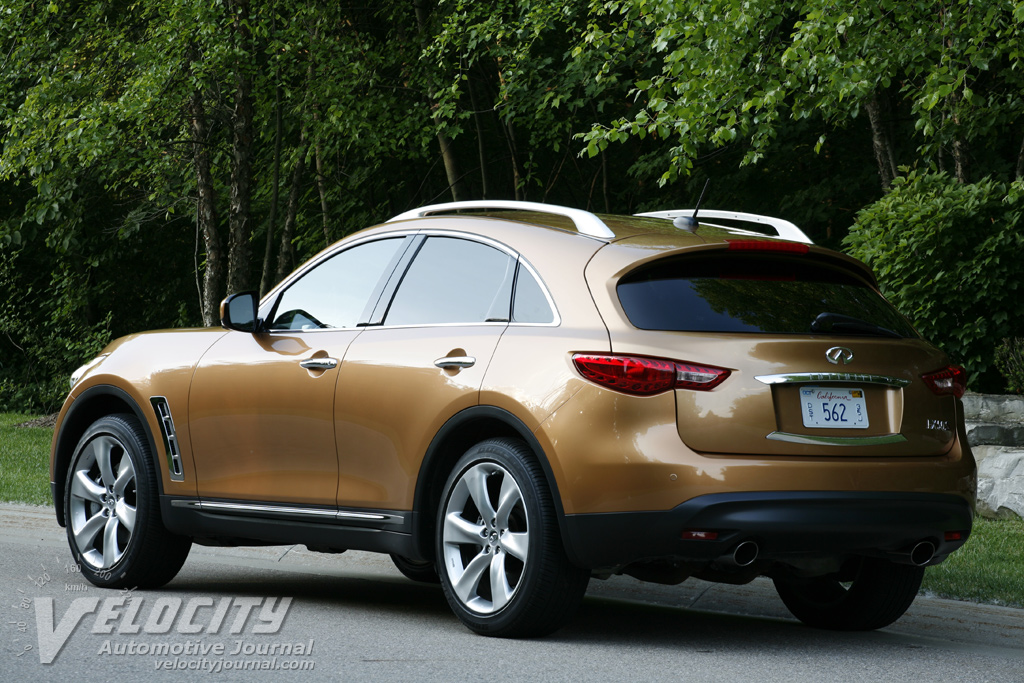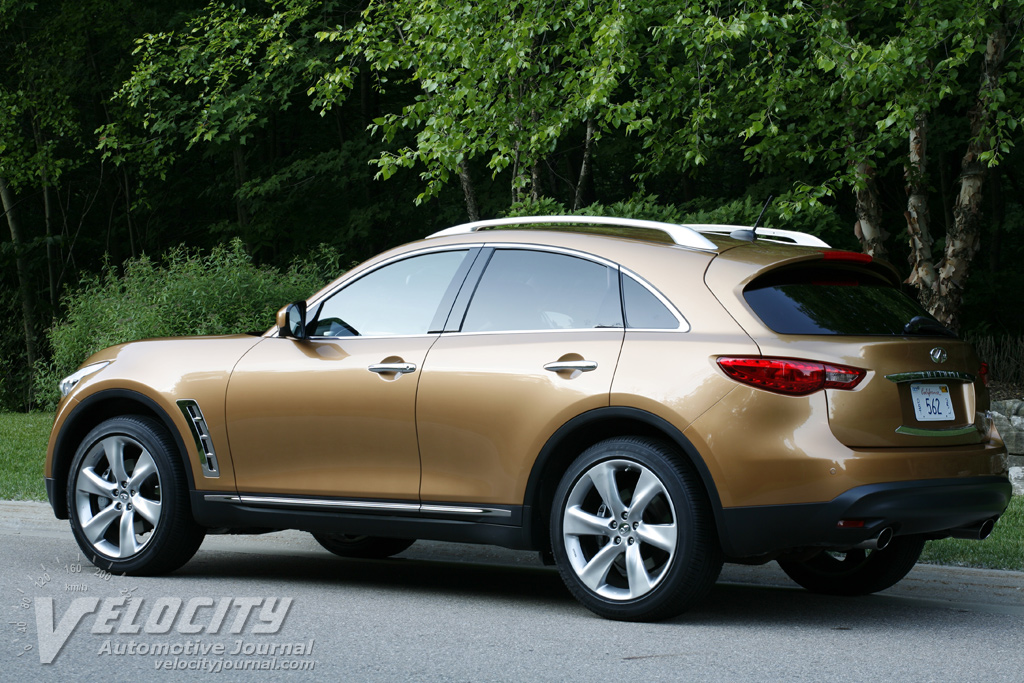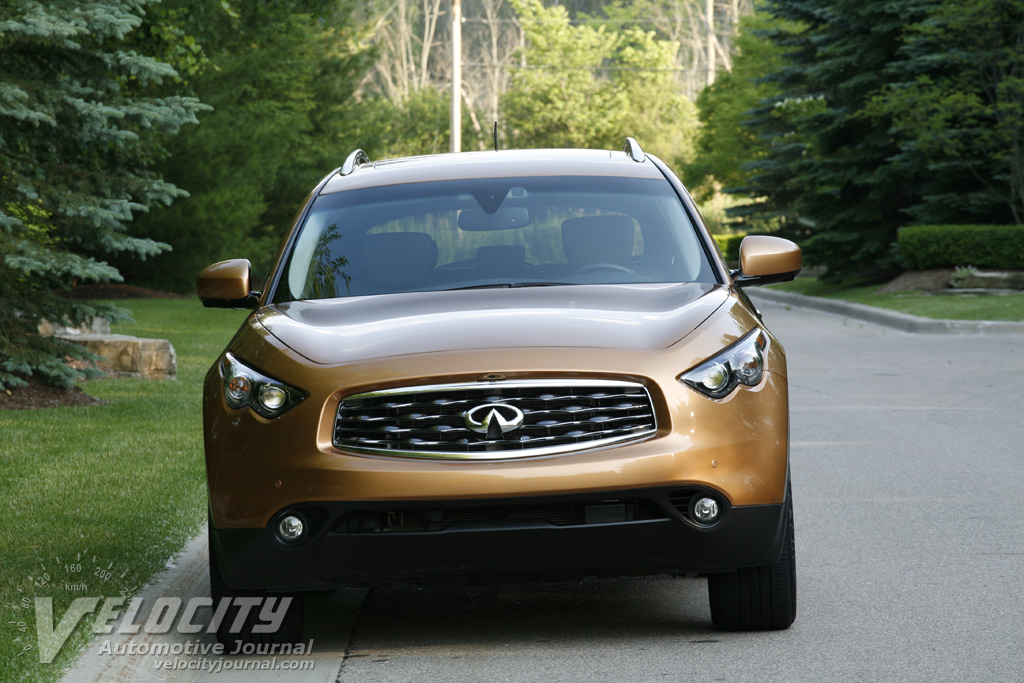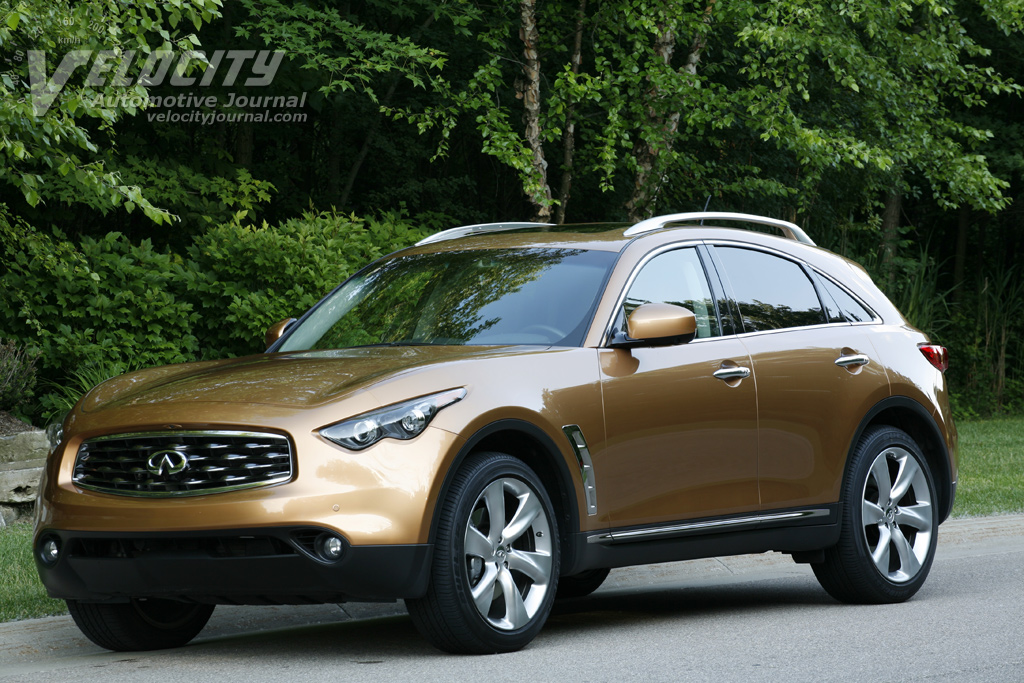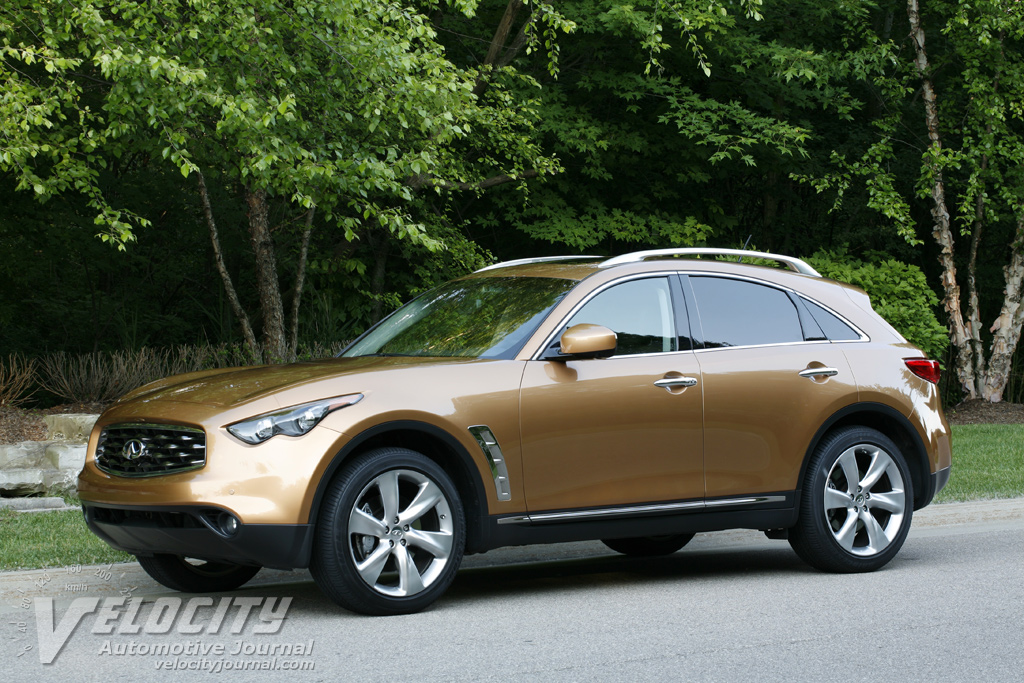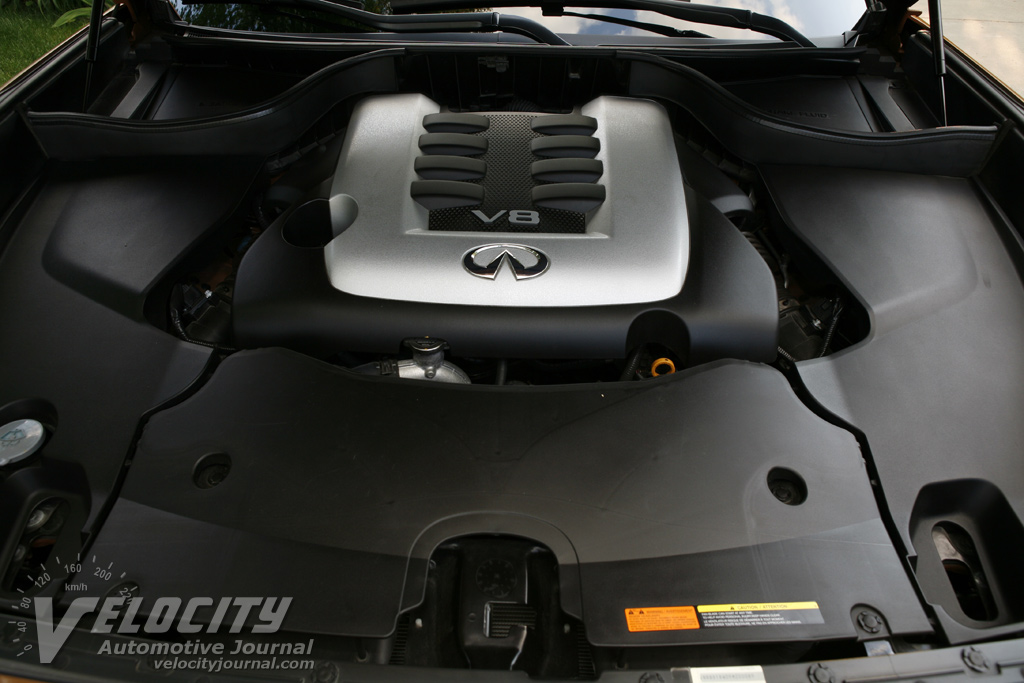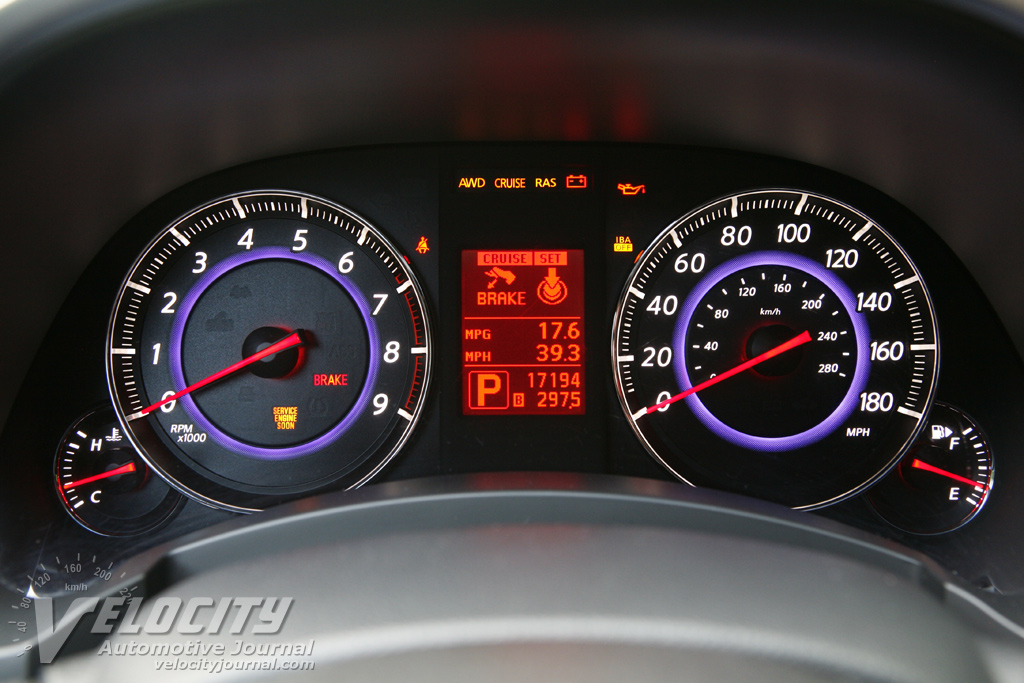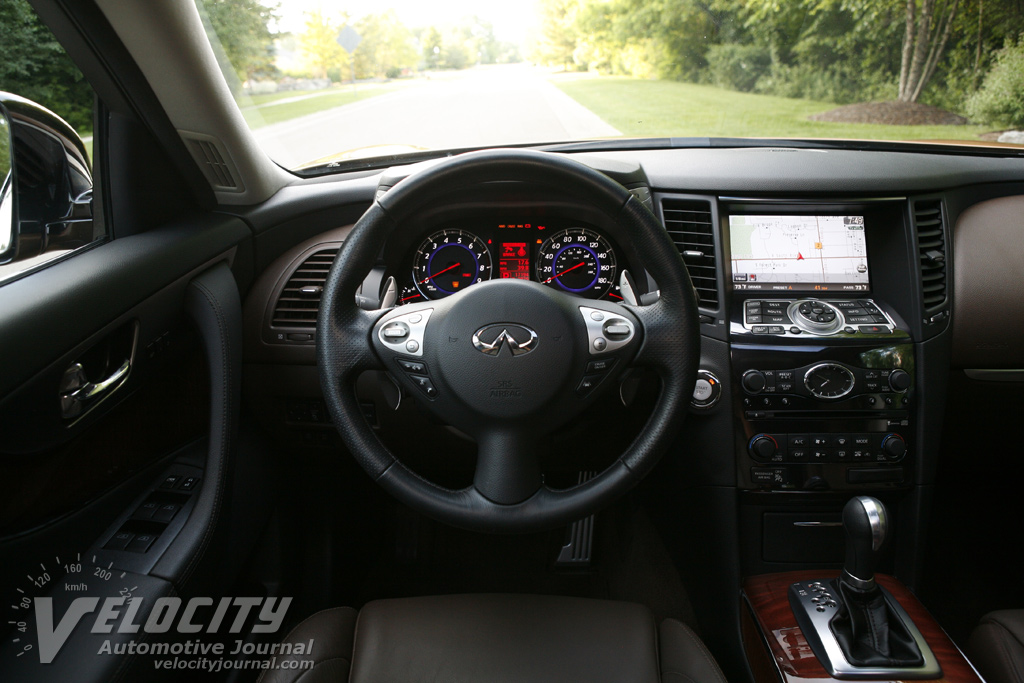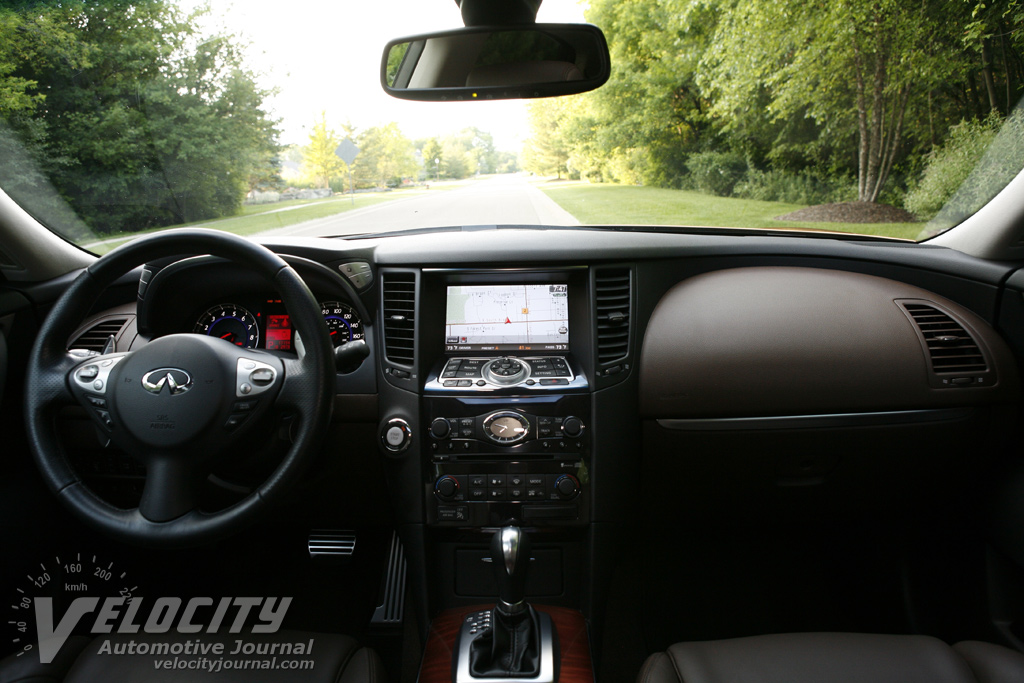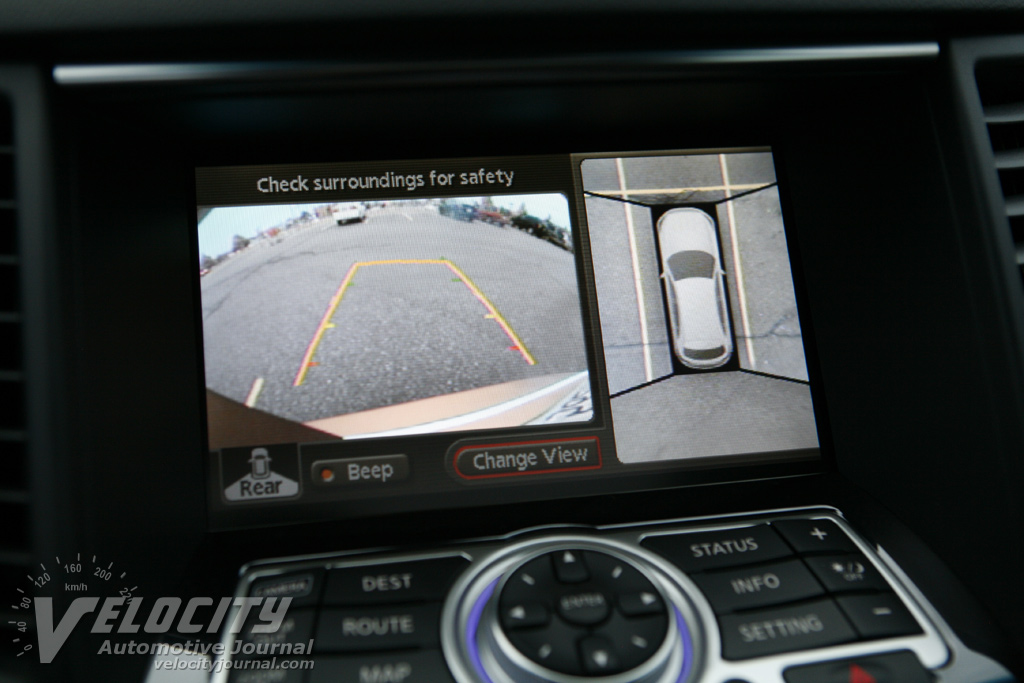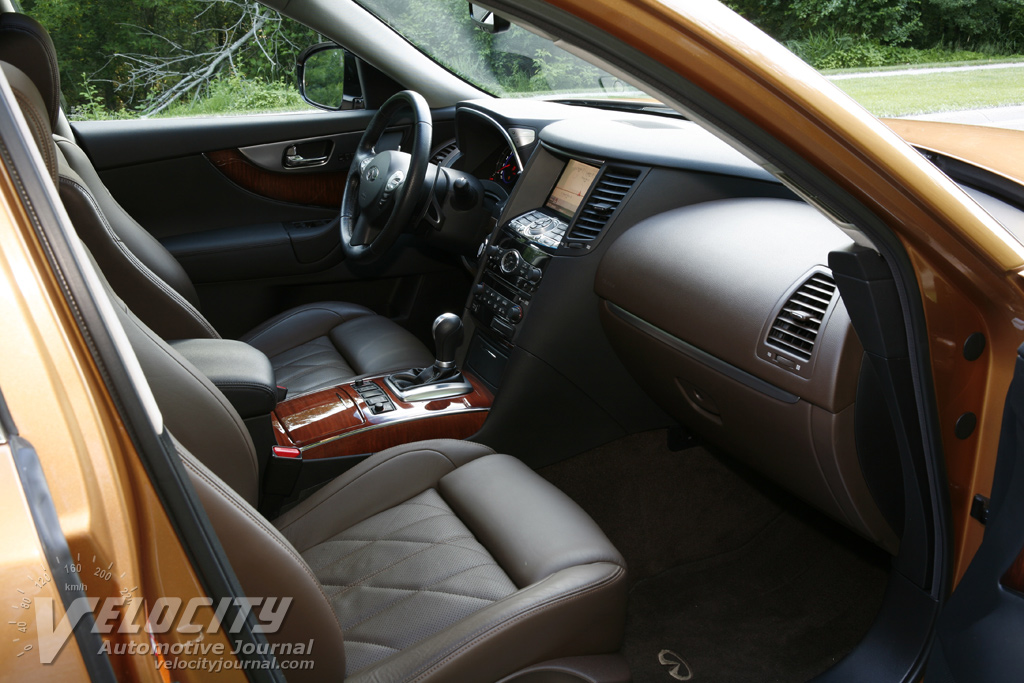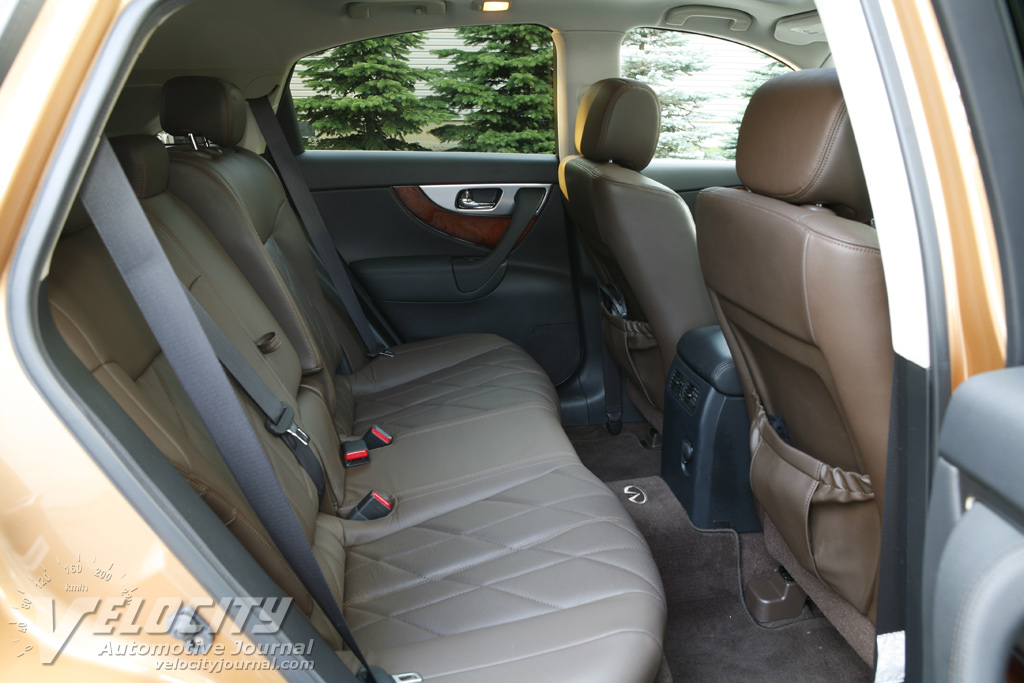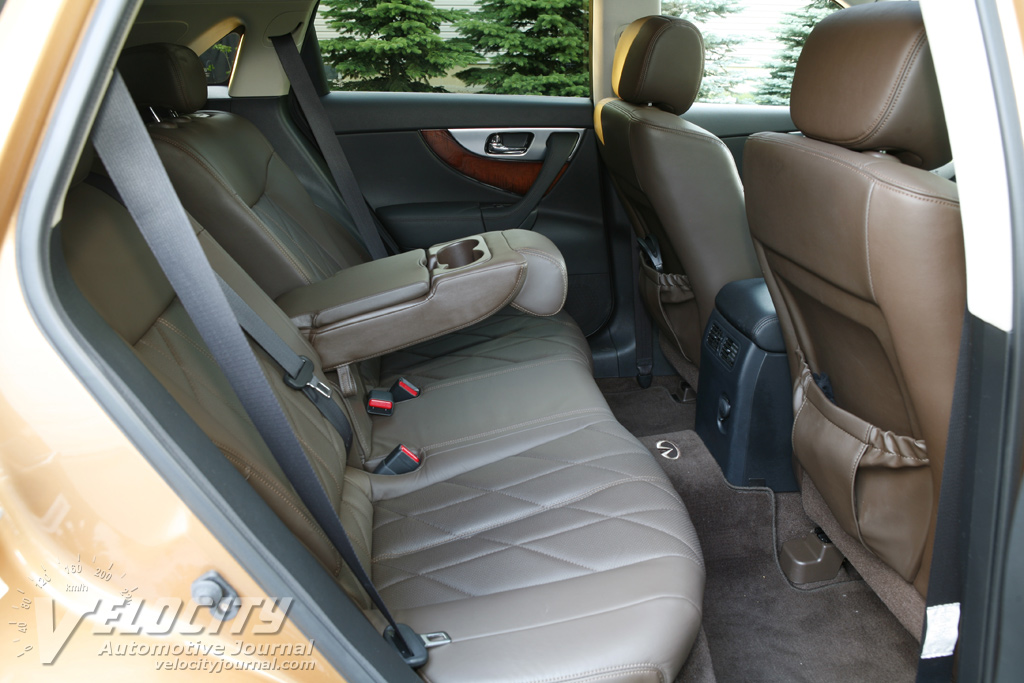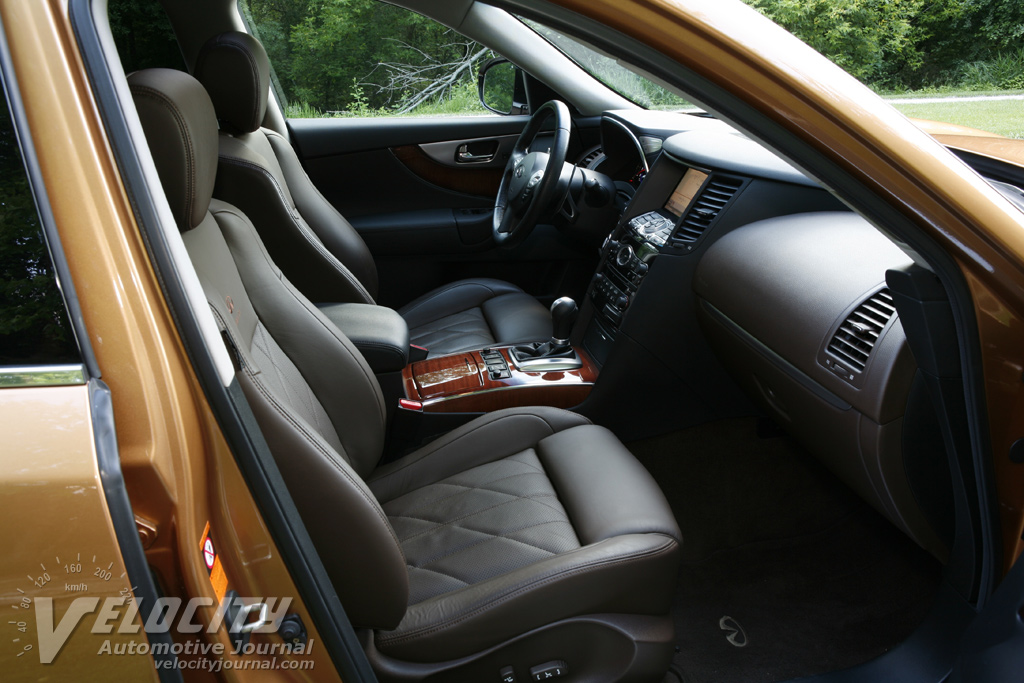2009 Infiniti FX50S
08/24/2009
Shahed Hussain
Infiniti defined the sports car of SUVs with the launch of the FX in 2003. Based on the well-regarded FM platform, the FX retained the athletic reflexes of the G35 with which it shared its underpinnings. Engine choices included a 3.5L V-6 or a 4.5L V-8 coupled to a RWD or AWD driveline. The second generation FX debuted in early 2008 and offered more luxury, technology, and performance than its predecessor. Infiniti retained the previous 3.5L V-6 for the FX35, although horsepower bumps up to 303-bhp, while the FX50 gets a V-8 enlarged to 5.0L cranking out an impressive 390-bhp. At its position at the top of Infiniti's lineup, the FX50 offers cutting-edge technology and luxury features, many not available on lesser models.
The FX lineup starts with the FX35, available in RWD ($42,150) or AWD ($43,600), but to step up to the FX50 AWD, the sticker price jumps to $58,400. We tested an FX50S equipped with the Sport Package ($3,000), Technology Package ($2,900), and the Infiniti Mobile Entertainment System ($1,600). After adding the $865 destination and handling charge, the total sticker price climbed to $66,765. A similarly equipped FX35 AWD would be nearly $10K less expensive, a far superior value, but gives up the brawny V-8 in the bargain.
Although the first generation FX cockpit lacked the interior ambiance expected in a premium SUV, Infiniti ensured that its successor benefited from maple wood veneer, quilted leather upholstery, and polished metal trim. Arrayed around the steering wheel hub are buttons for audio, Bluetooth phone, cruise control, and optional lane departure warning/prevention. Within the instrument binnacle is a 9,000 RPM tachometer, 180-MPH speedometer, along with smaller coolant temperature and fuel level gauges. Between the tachometer and speedometer is a driver information display that shows trip computer and transmission gear status. Standard power folding mirrors are actuated via a dash-mounted button.
At the top of the center stack is a touchscreen display for the navigation, audio, exterior cameras, and climate control systems; below are control buttons to duplicate most functions on the touchscreen. Controls for the Bose audio system surround Infiniti's signature oval analog clock; an optional Compact Flash slot and 9.3 GB hard disk allows convenient access to MP3 audio. XM satellite radio and an in-dash CD player are standard. Dual-zone climate controls allow the driver and front passenger to adjust temperature to their preferences.
Ordering the Sport Package upgrades the driver's seat with adjustable bolsters, extendable thigh cushion, and 4-way power lumbar support; the front passenger only benefits from the extendable thigh cushion. Control knobs on the center console adjust seat heating and cooling settings as desired. Overall front seat comfort is exceptional; the perforated leather is buttery-soft, yet padded firmly to provide proper support. Front headroom is acceptable for 6-ft. tall passengers, even with the standard moonroof. Rear seat accommodations are adequate for two occupants, but adding a third passenger would be tolerable for short trips only.
Drivers prone to inattentiveness will appreciate the optional Lane Departure Prevention (LDP) system that beeps softly when it senses the vehicle is wandering in its lane. We found the LDP feature to be overly sensitive, and turned it off most of the time. In the event of a possible collision, the available Intelligent Brake Assist (IBA) system energizes the brake system to reduce reaction time, and will actually apply the brakes if the driver does not react fast enough. Other useful technologies include the lntelligent Cruise Control combined with Distance Control Assist which maintains a safe gap between the FX50 and the vehicle immediately ahead; the system functions from 0-90 MPH, useful for rush hour crawls as well as highway cruising. Infiniti's pioneering Around View Monitor utilizes a front and rear wide angle cameras, with an additional camera under each exterior mirror to synthesize a 360 degree overhead view on the multi-function display. Parallel parking the FX50 is no sweat, as the system also shows a curb view to allow the driver to accurately judge vehicle position.
Infiniti's 5.0L V-8 complements the bold styling of the FX50, with plentiful torque at any RPM. The roaring exhaust note at full throttle was intoxicating, especially from 5,000 RPM to the redline; we were tempted to floor it at every opportunity just to hear the engine bawl like the Tasmanian Devil. A new all-aluminum VK50DE DOHC powerplant cranks out an impressive 390-bhp @ 6,500 RPM; maximum torque is 369 lb.-ft. @ 4,400. Power goes to all four wheels via the standard ATTESA E-TS AWD system. Despite a curb weight of 4,575 lbs, the V-8 had no difficulty catapulting the FX50 to well beyond legal speeds on the highway. Around town, the FX50 vaulted ahead of traffic effortlessly; however, low speed throttle response was somewhat abrupt, so pulling away from stoplights requires a delicate touch on the throttle. EPA fuel economy is a predictably low 14/20 MPG (city/hwy.), but since the old FX45 only managed 13/17 MPG (city/hwy.), the heavier FX50 still achieves superior fuel consumption. We averaged just below 18 MPG in mixed urban and highway driving. Compared to the FX35 AWD, rated at 16/21 MPG (city/hwy.) the V-8 is surprisingly barely less efficient than the V-6.
A new 7-speed automatic, standard on all FX models is partly responsible for the fuel consumption improvements. Replacing the previous 5-speed gearbox, the new transmission, with its closely spaced ratios provides nearly seamless shifts, in manual or automatic modes. Magnesium paddles situated on the steering column allow fingertip shifts, or use the console shift lever to change gears manually. Downshifts are especially fluid due to a Downshift Rev Matching algorithm that adjusts engine RPM to vehicle speed. A DS (Drive Sport) mode selects lower gears to enhance throttle response, although the ample torque from the V-8 nearly obviates any need for a sport mode.
With a suspension setup worthy of a sports car, the athletic reflexes (for an SUV) of the FX are no surprise. Aluminum components are used strategically to reduce unsprung weight. The front suspension comprises double wishbone front with dampers, coil springs, and a stabilizer bar. At the rear is a multi-link layout with coil springs, dampers, and stabilizer bar. The sporty suspension tuning, coupled with the huge 265/45R21 Bridgestone Dueler H/L tires endows the FX50 with surprisingly crisp turn-in response, aided by a 54/46 front/rear weight distribution. Adjustable dampers, controlled via a center console-mounted button enable the driver to switch into sport mode, which tightens up the suspension to reduce dive and squat; the cost of improved handling is reduced compliance, especially noticeable over frost heaves and other road imperfections. We left the dampers in the default Auto mode most of the time, because the stiff ride wasn't worth the incrementally enhanced handling. However, the driver-adjustable dampers and sophisticated suspension cannot disguise that the Infiniti's two-plus ton curb weight.
A new twin-orifice power steering (TOPS) reduces play and provides exemplary road feel. The rack-and-pinion system is augmented with an optional Rear-Active Steer that pivots the rear wheels depending on the front wheel steering angle and vehicle speed; this results in sharper handling and enhanced stability in normal driving or during emergency maneuvers. According to Infiniti, the Rear Active Steer reduces oversteer and minimizes intervention by the Traction Control system. In our experience, the FX50 proved to be exceptionally composed at high speeds, although we could never detect the Rear Active Steer in operation.
Heavy SUVs like the FX50 requires serious brake hardware, so Infiniti provides vented 14.0-inch diameter front rotors capped with 4-piston aluminum calipers; at the rear are 13.8-inch vented rotors with two-piston aluminum calipers. ABS, Electronic Brake force Distribution, Brake Assist, and Vehicle Dynamic Control (VDC) are standard. The big brakes haul down the FX50 with no drama, a reassuring thought considering how fast this SUV can accelerate. Pedal feel is excellent, which adds to driver confidence.
As the flagship in the FX model range, the FX50 mates the most powerful V-8 available from Infiniti with handling prowess superior to most other SUVs. All this performance and technology comes at a price that undercuts its chief rivals: the BMW X6 xDrive50i and the Porsche Cayenne S. Nonetheless, most FX customers would probably prefer the significantly less expensive FX35, which is arguably a better value than its V-8 sibling. Of course, if your budget stretches to nearly $70K, consider the FX50 as the rare SUV that you will actually want to drive.

